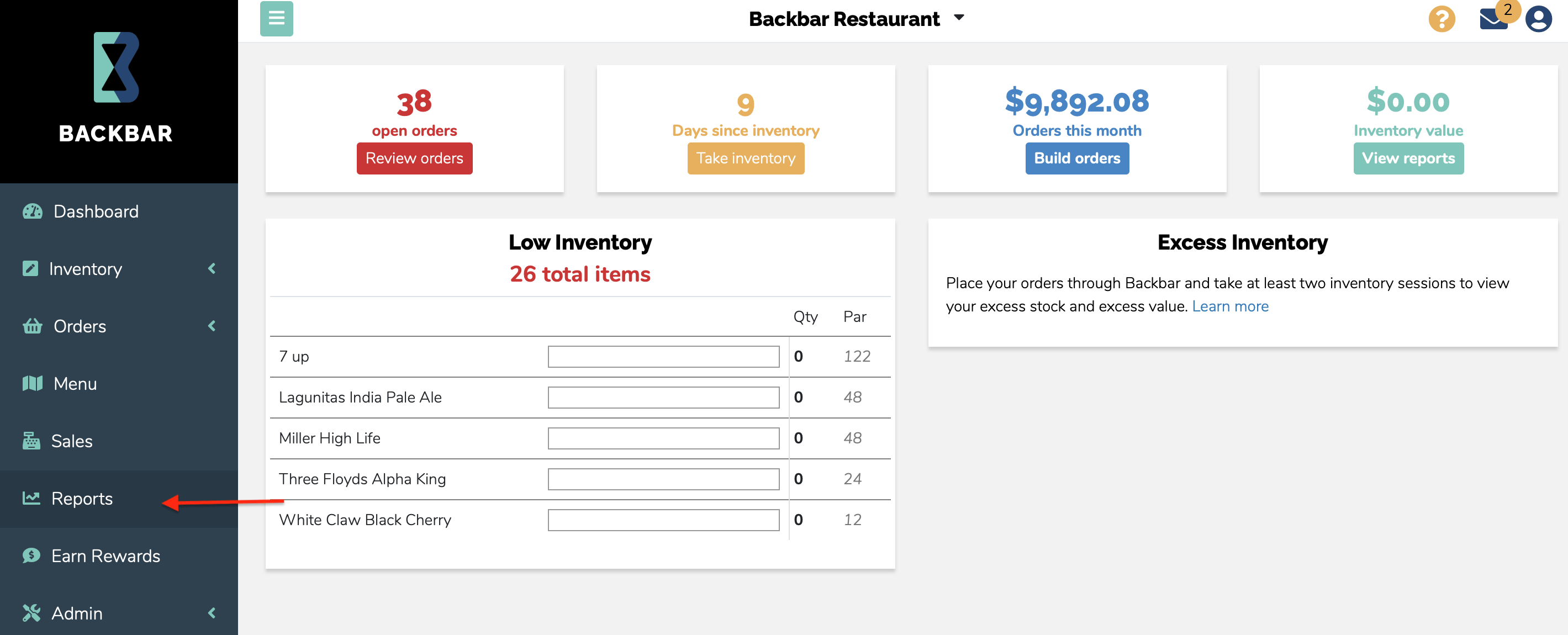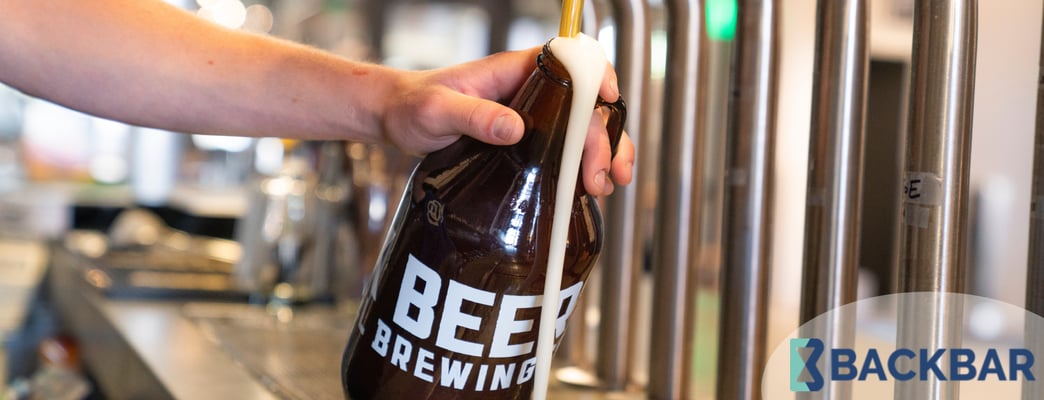There's no question that overpouring can seriously affect your profit. Inventory variance for restaurants is easy to track when you have the right tools and doing so will help eliminate profits slipping through your fingers. One extra shot here or there doesn’t seem that bad, but it can quickly add up to thousands of dollars of loss of profits over the course of your year.
Let’s Define Overpouring
When we talk about overpouring, we're referring to pouring too much alcohol into a drink. This results in unnecessary waste and a decrease in revenue. Overpouring is one of the top mistakes made by the bar and restaurant staff and can quickly lead to serious financial problems if not caught and addressed.
Overpouring a drink can come in various forms. Providing an additional amount of draft beer by removing the foam or accepting a larger tip for adding an extra shot to a drink. Even topping off someone's glass with enough wine to empty the bottle sooner is technically overpouring.
According to research, approximately 10-15% of all drinks served have been overpoured or undercharged.
How Does Overpouring Happen?
There are several explanations for overpouring. The two umbrella causes come down to if your staff is intentionally or unintentionally adding more alcohol than the recipe calls for in a drink.
Unintentionally Overpouring
It's understandable that especially if your bartenders free pour, human error is the most common cause of unintentional overpouring. Your staff may not be paying close enough attention, could be new to the process, or may have not been trained well enough and will pour too much alcohol out of a bad habit. Most likely these incidents are unintentional due to a lack of using proper measuring practices or instruments like a measured pouring spout and other precision tools.
Intentionally Overpouring
Some bartenders will be tempted to overpour deliberately in hopes of getting bigger tips from customers. While it may add money to the bartenders pocket, it will take money from your profit. It's understandable to brush this under the rug as no nig deal. What's a few extra drinks for regulars? But the more it happens, the more you're losing in sales and inventory over time.
How Does Overpouring Affect Your Profits
The service and hospitality industry is one of the most unforgiving industries when it comes to profit margins. Because of this, even the smallest inefficiencies can amount to thousands of dollars lost every year.
If you don't keep an eye on this issue and it goes unchecked, overpouring can add up quickly. In addition to the financial loss caused, overpouring can also affect customer service and employee morale. Customers may feel cheated if they don’t get what they pay for, and staff may become frustrated and unmotivated if they are constantly being reprimanded for their mistakes.
Let's look closer to see how overpouring really turns into loss of profits:
To further illustrate this point, consider how overpouring can impact the sales of various beverages.
- Wine: Pouring an additional one ounce of wine per glass loses you about 20% in revenue on a typical 25.4 oz bottle.
- Liquor: Actual liquor can account for such a small part of an overall cocktail recipe that one ounce of overpour in a specialty cocktail can double the ingredient cost of that liquor in your recipe.
- Beer: Even though beer is pretty affordable overall, beer is likely the most frequently consumed beverage in your bar. A couple of ounces of excess per glass amounts to thousands of dollars every year.
Shrinkage
Shrinkage can be defined as when your bar loses inventory due to factors other than sales. This could include spillage, theft, human error, and of course overpouring. In other words, shrinkage is the difference in the amount of product your bar sells vs the amount actually used during a period of time.
The calculate this you'll need to figure out your Cost of Goods Sold (COGS) as well as your usage rate. Then you can use this equation:
Shrinkage = (cost of goods sold) - (usage)
How To Catch Overpouring Before it Becomes a Problem
Variance Reports
Alongside shrinkage, inventory variance reports can tell a lot about what’s going on with your business. If you’re not effectively keeping track of that important gap between your sales and inventory, you risk hemorrhaging money without even realizing it. There’s absolutely no downside to tracking your inventory variance so there’s no excuse not to.
Theoretical Inventory vs. Physical Inventory
In short, your theoretical inventory is the calculation of exactly how much inventory your business should have after a certain period of time and it's calculated by how much you sold via your POS system. Actual inventory is the actual count of what you have remaining after a certain time period and requires a hands-on count to calculate.
Backbar is an inventory system that integrates with several POS systems so you can quickly pull up your theoretical inventory and then input your actual inventory all in one place. This makes viewing your variance a breeze.
Backbar Variance Report 
Backbar makes it easy to dig into reports including your variance reports. After successfully setting up your Backbar Essential plan account you'll be able to navigate to your reports dashboard and view a look at your usage and COGS without you having to manually run the numbers!
Your Usage Details report will show you how much product is moving through your business within a set period of time.
Your COGS report will show you a detailed peek at your sales, usage, and percentage, so you can easily see how your goods are selling.
These are only a few of the reports and benefits when you switch to Backbar.
Ways to Reduce Overpouring
Take stock of your bar
If you aren’t regularly and accurately performing inventory counts, then there’s no way you can know what your restaurant or bar has in stock let alone how much liquor you are losing on a regular basis from the issues like overpouring.
Using a bar inventory management system, like Backbar, allows you to gain complete control over your inventory. These insights will show you what your pour cost percentage is, your liquor shrinkage and give you a better view of where you might be losing money from variance.
Use liquor measuring tools for pours
The easiest way to almost eliminate unintentional overpouring is by measuring your pours instead of free pouring. Making your bar utilize proper measuring tools like jiggers for exact liquor pours into each beverage is an easy way to ensure your employees are pouring correctly.
Take the time to train your employees
Your employees are the key to your bar. They are the people pouring your products, and it’s important that they are fully trained in the methods and best practices that help to reduce overpouring in your bar.
Take the time to train your employees in some pouring best practices, as well as how to properly use any measuring tools behind the bar. Providing a resource behind the bar that they can refer back to if needed can help ensure consistency.
Once you take the time and effort to reduce overpouring in your bar, additional profits will follow.



